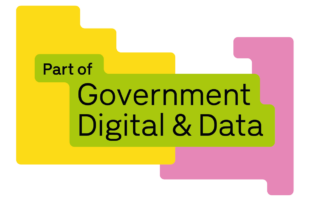
If the Department for International Trade (DIT) is to drive £1 trillion of exports in the next 4 years, it is going to have to do things better online.
Historically, the Department has been incredibly effective at supporting and marketing Britain’s undoubted talent and brilliant products.
But that effort needs to rapidly become even more effective - more digital - if British business are going to compete at an Olympian level of exporting against the likes of China and the US.
And at the heart of efforts to transform what DIT does digitally is the content team. Content is what drives the success of everything online.
But content is just the words, right? The copy?
Wrong.
Content is not that simple. In fact, you probably won’t notice much of the content while you read this - it’s basically everything you see or hear online. Let me give you some examples.
Things that are copy (and also content)
- A headline
- A picture caption
- What a link button says (aka the “call to action”)
- The text of a drop-down menu
- An email subject line
- A meta-description (some hidden words that tell Google what a webpage is about)
Things that are content (but not copy)
- An animated gif
- The size, style and colour of the typeface
- How things are spelled (see the GDS style guide)
- Where links go to
- Deciding what subjects to include on a webpage and how they relate to the rest of a website
How content design works
All content work (including copywriting) starts with research.
When I worked on print magazines in the days before the internet, this meant interviews, reading correspondence and analysing basic readership surveys.
It’s a bit more sophisticated these days.
Well-designed content starts with finding out what our readers (or users) need. At the DIT our users are incredibly varied. They could be a tech entrepreneur based in Newcastle, a buyer for a supermarket chain in Mexico, or a charity director looking to build wells in Sudan.
Making sure we have insight into their needs helps us make content that will help them understand things better, do things right, or do things more quickly.
Not all of us are trained or experienced copywriters, and understanding the readers’ or users’ needs is probably the best way to improve how you write.
What does that mean in practice?
The way content is designed depends on the audience (our users) and the aims of the stakeholders.
In the case of international trade, our stakeholders want to boost the number and value of British exports.
To help make this happen, content designers need buy-in from these stakeholders and subject matter experts across the department (and throughout government).
We cannot do it in isolation.
Or rather: we can, but it will be terrible.
Our users’ needs are still being probed, but are unlikely to be far from core business values of getting the best product at the right time for the right price (and my assumption is that this means they might want help finding a British trade partner).
Content design helps marry up these user needs with aims of our stakeholders.
No rest for content design
As time goes by, users’ needs can (and do) change.
For example, e-commerce is changing the way people trade and do business - in some ways simplifying matters, in others making it more complex.
Because of these kind of changing needs, any well-designed content is part of a process of continual review and improvement.
Feedback from everyone - internal and external - is of huge value for keeping content valuable. Each piece of content should be revisited with the assumptions re-tested with new research and fresh eyes.
It remains true that the internet is never finished.
Exporting and pregnancy: two sides of the same content coin
An example of good content design is NHS Choices, where I used to work. Here’s how they make public-facing content at NHS Choices - Europe’s largest health website.
One of the big tasks in my 7 years at NHS Choices was grappling with the complex and sensitive matter of redesigning content on everything to do with getting pregnant and having babies. It’s not all stretch marks and morning sickness, there are forms to fill in too!
From a content point-of-view, this is about as complicated as it gets - and it’s not too dissimilar to the level of complexity involved in John Morton’s work on explaining how exporting works. But despite the obvious difficulties and differences, both started with user needs and continue to demand feedback and incremental improvements.
Find out how digital content can help achieve your aims
Content has a place in inspiring exporters and overseas buyers and investors to change their behaviour or perceptions. It also plays a role in informing UK citizens of their rights if they want to trade internationally, and the processes involved.
It’s important we get the right approach from the outset and don’t simply assume that responding to each requirement in turn as best we can will be helpful in the long-run.
For this reason the digital team at the DIT is developing a content strategy which is shifting us from reactive copywriting to a full digital content service proposition. It’s this strategy that should enable us to align our efforts on content with the ultimate goals of the department.
If we are going to double Britain’s international trade by 2020, now is the time to think strategically. British firms are renowned for the quality of their goods and services around the world, and we want DIT’s content to be world class too.
If you are interested in reading more about content design at DIT, see our other blogs by the Content Design team.

